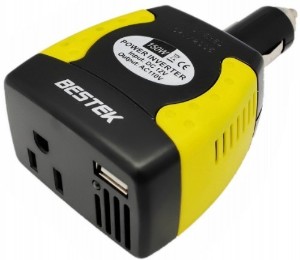So you probably have heard that white roofs are good for green building: white reflects the sun’s heat and keeps the building cool in the summer, reducing AC costs and energy use. In addition to painting the roof (and most of the exterior, except for a few colorful graphics) with white no-VOC paint, I will be using a product called Radiosity 3000 as a radiant heat barrier to keep The COMET cool in hot temperatures.
As you can probably imagine, a little aluminum box like the camper basically turns into an oven in the heat. My solar system won’t allow me to use air conditioning (I also don’t have the space for an air conditioner, and don’t particularly like them in general) so I was looking for a solution to keeping the COMET cool in the summer. The people at Green Building Supply suggested Radiosity 3000, and I think it’s going to end up being the perfect thing.
Radiosity 3000 is a radiant heat barrier that comes in powder form and mixes right in with interior or exterior paint. It has no effect on the paint’s color or performance, as it is just very fine glass. Here’s an excerpt from the Green Building Supply website:
“Radiosity 3000 is a paint additive that creates a radiant heat barrier on roofs, ceilings and walls to greatly reduce cooling costs. It can also be used in interior applications to reflect and trap warm, radiant heat from fireplaces, stoves or in-floor heating systems. Radiosity 3000 contributes significantly to the thermal comfort levels in both summer and winter months while it reduces energy usage.”
Basically, I am going to mix the Radiosity 3000 in with the exterior paint, and paint the entire COMET with it to keep it cool in the summer. On the interior, I will mix it with the interior paint to keep heat in when it is cooler outside. I’ll have a double heat barrier!
Pretty cool!
………………………….
Tomorrow I’m going to start demolition in The COMET: tear out the rotted wood in the walls, take out the old water tank, clean it up inside, and get a real sense of what needs to be replaced guts-wise. We’ll see what’s hiding behind those soft spots in the walls, so expect some gruesome photos tomorrow!





